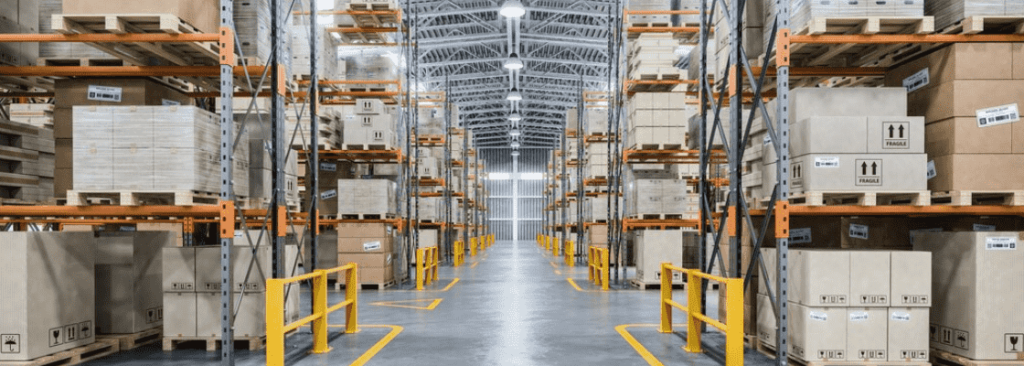Supply Chain Distribution | Key Trends and Challenges for the Future
Supply chain distribution is the process of getting finished goods from the manufacturer or supplier to the end customer. It is a critical part of the global economy and ensures that consumers have access to the products they want. In recent years, the supply chain distribution industry has faced different changes.

These changes have been driven by several factors, including the rise of e-commerce. Also, the globalization of the economy, and the development of new technologies such as the use of drones in logistics. This blog serves as your guide into this vibrant industry, where we read out the key tendencies shaping the future. And the challenges that industry leaders must navigate. So grab a cup of coffee, sit back, and let’s explore the trends of supply chain distribution!
Supply Chain Distribution Definition and Importance
Supply chain distribution, often simply referred to as “distribution,” encompasses the processes and activities involved in the movement of products from the manufacturer or supplier to various distribution points and ultimately to the end consumer or business. It includes a series of steps that individuals ensure handle, store, and transport products effectively throughout the distribution network.

However, supply chain distribution is an important part of the overall supply chain management (SCM) process. The components of supply chain distribution involve order processing, warehousing, transportation, and the delivery of goods to the recipients. These components, when well-coordinated and optimized, help streamline the flow of goods from the point of production to the point of consumption. If you’re interested in diving deeper into the principles of supply chain management, don’t miss our comprehensive guide on “The 5 Key Principles of Supply Chain Management.”
Supply chain distribution is a complex process, but it is essential for businesses that want to deliver their products to customers efficiently and cost-effectively. First, it helps to ensure that consumers have access to the products they need and want. Second, it helps businesses to reduce costs and improve efficiency. Additionally, it helps businesses to compete in the global marketplace. By implementing effective supply chain distribution strategies, businesses can improve their profitability, compete more effectively, and better serve their customers. Basically, supply chain distribution bridges the gap between the manufacturer or supplier and the end customer, ensuring the right quantity, place, time, and condition for product delivery. In these competitive business days, acquiring distribution is often the key to achieving success in the broader supply chain.
Current Trends in Supply Chain Distribution
The logistics industry is constantly evolving so supply chain distribution does, and new trends are emerging all the time. Here are some of the key trends that will influence supply chain distribution in 2023/24.
- Artificial intelligence (AI) and Automation – AI and automation are being used to streamline and optimize supply chain processes across the board. For example, AI can be used to predict demand and optimize transportation routes. Whereas, automation can be used to automate tasks such as picking and packing orders. The Impact of AI in logistics is especially notable, as it’s revolutionizing decision-making processes and enhancing real-time tracking.
- The Internet of Things (IoT) – Companies are using the IoT to enhance visibility and transparency in supply chains. For instance, they employ IoT sensors to track the location and condition of goods as they traverse the supply chain.
- E-commerce – Additionally, the growth of e-commerce is putting new demands on supply chains. Consumers expect fast and convenient delivery, which means that supply chains need to be more responsive and agile.
- Sustainability – Moreover, businesses and consumers are increasingly considering sustainability. They are redesigning supply chains to reduce their environmental impact and promote sustainable practices.
These are just some of the key trends in 2023/24 that are shaping supply chain distributions. Businesses that want to stay ahead of the curve need to be aware of these trends and invest in the technologies and strategies that will help them meet the changing demands of customers.
Challenges Facing Supply Chain Distribution
While supply chain distribution is a necessary component of the broader supply chain, it’s not without its share of challenges. Here are some of the key challenges that businesses face in supply chain distributions.

- Disruptions – Recent years have witnessed an unprecedented series of global supply chain disruptions, from natural disasters to the ongoing challenges posed by the COVID-19 pandemic. These disruptions can lead to delays, increased costs, and supply shortages.
- Complexity – Supply chains are becoming increasingly complex, with goods moving across different borders and through different modes of transportation, such as air freight, sea freight, and land freight. This complexity can make it difficult to manage and optimize supply chains.
- Cost – Furthermore, the cost of transportation, fuel, and other supply chain-related expenses is rising, and businesses are constantly looking for ways to reduce these costs. However, this can be challenging without sacrificing efficiency or quality.
- Cyber Threats – With the increasing reliance on digital technologies for supply chain distributions, data security is a paramount concern. Cyber threats and data breaches can disrupt distribution operations and compromise sensitive information.
Businesses also face specific challenges related to the mentioned trends, in addition to these general challenges. For example, the growth of e-commerce is putting new demands on supply chains, as businesses need to be able to deliver goods to customers quickly and conveniently. However, addressing these challenges requires innovative strategies, advanced technologies, strong partnerships, and a forward-thinking approach to supply chain distribution.
The Future of Supply Chain Distribution
Different trends will shape the future of supply chain distribution, including the use of technology and more sustainable methods. We all acknowledge that technology will play a major role in shaping the future of supply chain distributions. Businesses will employ artificial intelligence, automation, and the IoT to create more efficient and effective supply chains.
AI will predict demand, optimize inventory levels, and make decisions faster and more efficiently. Automation will automate tasks such as managing warehouses. Whereas, the IoT will create more visibility and transparency in supply chains. It tracks the location and condition of goods as they move through the supply chain.

Supply chains will also need to become more agile and responsive in the future. This will require more flexible supply chain networks, also the ability to use data and analytics to make decisions faster. Additionally, businesses and consumers are also becoming increasingly focused on sustainability. This will involve using more sustainable transportation options, packaging materials, and energy sources.
Finally, we can expect to see more localized supply chains in the future. This can help to reduce the risk of disruptions and improve the resilience of supply chains. Overall, the future of supply chain distributions is likely to be more agile and localized. Furthermore, businesses that can adapt to these trends will be better positioned to succeed in the future. At Super Middle East, we’re dedicated to revolutionizing supply chain distributions by utilizing the power of innovation and efficiency. With our expertise and commitment, we aim to lead the way in overcoming these challenges. And embracing the trends that will define the future of supply chain distribution. Thanks for being with us!


